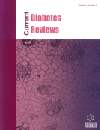
Full text loading...
We use cookies to track usage and preferences.I Understand
The prevalence of type 2 diabetes is on a rapid rise in Tanzania, driven by lifestyle modifications, nutritional changes, and increased obesity rates. This article reviews the epidemiology, and disease trends of type 2 diabetes in Tanzania and explores the economic implications and challenges in care, including policy, education, and healthcare systems.
The study employs a narrative literature review from research articles, local healthcare reports, surveys, and public health records. It evaluates the economic impacts, healthcare capabilities, and patient behaviors in managing type 2 diabetes in Tanzania.
The economic burden of diabetes in Tanzania is increasing due to direct healthcare costs, lost productivity, and reduced quality of life, placing significant pressure on the already resource-limited healthcare system. Treatment dropout rates are alarmingly high, and healthcare providers' knowledge of diabetes is insufficient. Insulin and metformin availability are critically low. Cultural norms and dietary habits pose substantial barriers to effective disease management.
The growing prevalence of type 2 diabetes in Tanzania presents a significant public health crisis, necessitating comprehensive strategies for prevention, early detection, and effective disease management. Priorities should include enhancing healthcare infrastructure, increasing public investment, improving healthcare education, and tackling socio-cultural barriers to disease management.

Article metrics loading...

Full text loading...
References


